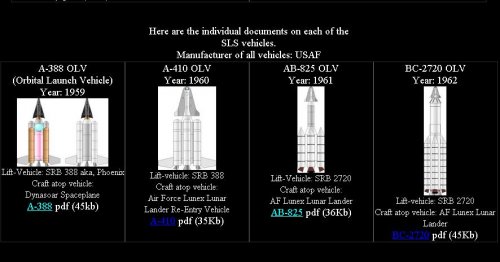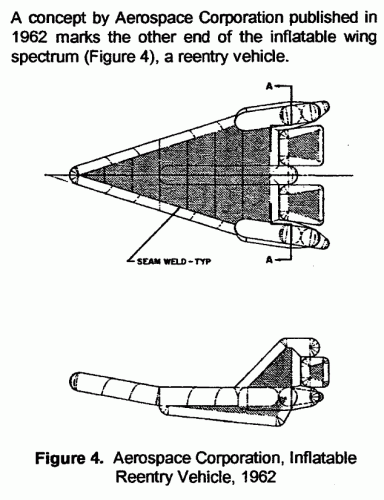This is from a briefing given by the USAF's Ballistic Missile Division (AFBMD) to industry on 14 September 1960 that I found on the NRO's FOIA site:
----------------------------------------
True Military Operational Space launching Vehicle Concept
(PHOENIX concept vehicle)
- Recoverable, low cost, booster stage
- Low cost, simplified, throw-away, high energy, final stage
- Recoverable, low cost, second stage
...
D. Launch Vehicle Systems Required for Military Space Systems (PHOENIX)
Major Henderson
The technical and operational characteristics of military space booster systems are quite different than those for ballistic missile systems or scientific payload boosters. Ballistic missiles are conceived to be in a state of instant readiness for launch during a period of hostilities. As a result, a launch facility with ground support equipment is provided for each missile. Missile facilities are designed to withstand initial attack and reliably conduct one or more launchings as soon as possible upon command. Ballistic missiles costs are amortized over a long period during which the actual vehicles comprise part of our deterrent force. Cost effectiveness is based upon the destructive effect of nuclear payloads on enemy targets.
With few exceptions, launch operations for Space systems will be conducted during peacetime. Facilities must be designed for efficient and economical conduct of many launches. Invulnerability to attack is of lesser importance and, instead of a minimum reaction time, a flexible, and predictable action time is needed. Frequent operational launches will be needed by a variety of space weapon systems. Hence, space launch vehicle systems must be flexible—able to launch a variety of payloads for a variety of purposes—and amenable to routine operations. They should be simple and capable of routine launches by military crews. The paramount need, however, is to reduce the overall cost of launch vehicle systems and launch operations by one order of magnitude or more. Otherwise, this nation cannot afford the number of launchings necessary to provide an effective military capability in Space.
These requirements are the basis of the PHOENIX concept. This concept poses a requirement for a launch vehicle system, including vehicles, facilities, support equipment and services, logistics, and operational routines which minimize overall system launch costs. A study is underway at AFBMD to determine what type of launch vehicle system will best fulfill these requirements. The key figure of merit for comparing, candidate systems is cumulative program cost divided by total payload weight or, in simple terms, dollars per useful pound in orbit.
The first phase of the study, now underway, will be complete by the end of 1960. Parametric design studies are being conducted on a number of attractive vehicle design approaches. Complete system concepts are being laid out including development and operational facilities, and logistical/operational support needs as veil as the vehicles themselves. Complete development, test, production, logistic and operational programs are being outlined. Working closely with the Aerospace Corporation, personnel from RAND are performing cost-sensitivity analysis and are costing out the complete programs. For the first phase, studies are being conducted for vehicles of 800,000 pounds first stage thrust, optimized for performance in a 300 nautical mile eastward orbit. The size and orbit are selected for convenience in study and not because of any specific requirement for 800,000 pounds launch thrust. Specific missions and payloads are not being considered in Phase I. The objective of Phase I is to enable selection of the two or three candidate vehicle systems approaches which can best fulfill requirements.
The second Phase of our study is to be completed by the end of August, 1961. Using technical scale factors and cost factors derived during Phase I, candidate systems will be analyzed over the complete size range of interests. All mission and payload planning data available will be collected and analyzed according to launch rates, time periods, and equivalent 300 nautical mile orbit payload capability required. Design optimization of all parts of each system for economy will be completed in as much detail as possible. We should be able to identify the best system, lay out a complete program to develop it, and prove its potential at the end of the study.
Our plans are tied to the objective achieving an operational capability with the first PHOENIX vehicle by late 1965. A part of the propulsion applied research program has been oriented to provide data needed for our analysis and to develop the basic technologies required should more advanced propulsion techniques prove critical to obtaining the PHOENIX objective of maximum overall reduction in costs.


